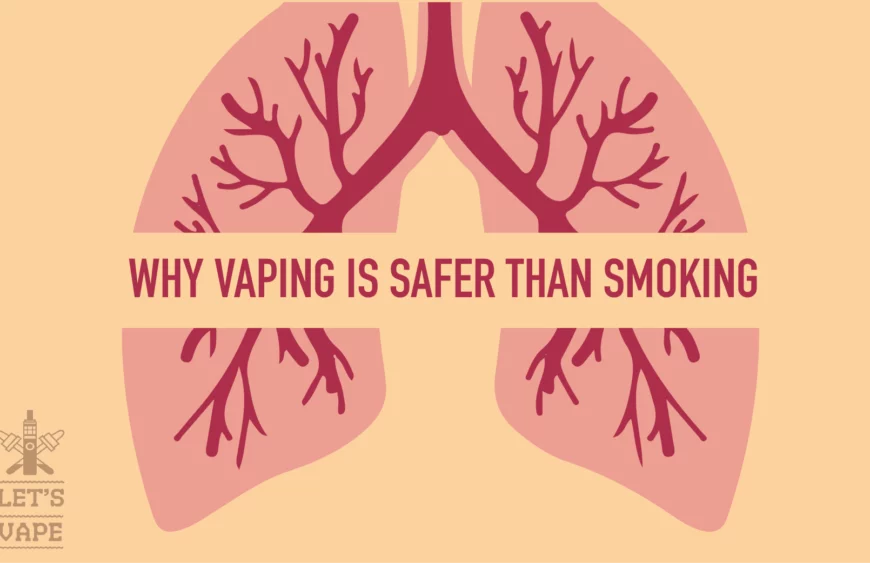In the quest to quit smoking, many individuals are exploring alternative methods that can help them break free from the harmful grip of tobacco addiction. One method that has gained significant attention in recent years is vaping, touted as a safer option to quit smoking. While controversy surrounds vaping, numerous studies and anecdotal evidence suggest that it can indeed serve as an effective tool for smoking cessation.
A research was done by Public Health England (PHE) in December 2018 that indicates that vaping is 95% safer than smoking .
The Transition from Smoking to Vaping: A Step Towards Healthier Choices
Traditional cigarette smoking is well-known for its severe health risks, with a litany of detrimental effects on respiratory and cardiovascular systems, among others. Vaping, on the other hand, involves inhaling vapor from an electronic device that heats a liquid containing nicotine, flavorings, and other substances. While vaping does introduce nicotine into the body, it eliminates many of the harmful byproducts of combustion that arise from burning tobacco.
Reduced Exposure to Harmful Chemicals
One of the key reasons why vaping is considered safer than smoking is the absence of combustion. When tobacco is burned, it releases a myriad of toxic chemicals, including tar, carbon monoxide, and a host of carcinogens. These substances are responsible for the majority of smoking-related health issues. Vaping, however, operates by vaporizing a liquid rather than burning it. This vaporization process significantly reduces the production of harmful chemicals, leading to a lower risk of associated health complications.
Controlled Nicotine Intake
Vaping offers smokers the flexibility to control their nicotine intake more effectively. E-liquids come in varying nicotine concentrations, allowing users to gradually reduce their intake over time. This controlled approach can aid in managing withdrawal symptoms and the addictive cravings associated with quitting smoking. As a result, individuals can gradually wean themselves off nicotine while still satisfying the psychological aspect of smoking.
Addressing Psychological Aspects of Smoking
Smoking is not only a physical addiction but also a psychological habit deeply ingrained in daily routines and social interactions. Vaping can simulate the familiar hand-to-mouth gesture and inhalation motion, providing a satisfying substitute for these behavioral aspects of smoking. This can make the transition from smoking to vaping more manageable, as individuals don’t have to abruptly abandon their routines and habits.
Research and Regulation
It’s important to note that while vaping is considered safer than traditional smoking, it is not without potential risks. Research is ongoing to fully understand the long-term health implications of vaping. Furthermore, regulations surrounding e-cigarettes and vaping products are evolving to ensure quality, safety, and proper marketing practices.
Conclusion
While the debate continues, evidence leans towards vaping as a healthier alternative to smoking. As research progresses and regulations tighten, individuals stand better informed, making choices beneficial to their health.
Have you made the switch from smoking to vaping? Share your experiences in the comments below.





